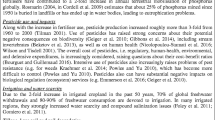Abstract
An analysis of the theory of biodynamic farming is presented. The founder of biological dynamic agriculture, the Austrian Rudolf Steiner, Ph.D., (1861–1925), introduced methods of preparation and use of eight compounds forming the nucleus of his agricultural theory. His instructions were based on insights and inner visions from spiritualistic exercises and not on agricultural experiments. His purpose was to show mankind a form of agriculture that enables not only the production of healthy foods but also the achievement of harmonious interactions in agriculture and a spiritual development of mankind through “cosmic forces” captured in the foods. However, many of his statements are not provable simply because scientifically clear hypotheses cannot be made as his descriptions were unclear and not stringent. Those predictions that can be tested scientifically have been found to be incorrect. It was concluded that Steiner's instructions are occult and dogmatic and cannot contribute to the development of alternative or sustainable agriculture.
Similar content being viewed by others
References
Abele, U. 1978.Ertragssteigerung durch Flüssigmistbehandlung. KTBL-Schrift 224. Münster-Hiltrup, Germany: Landwirtschaftsverlag GmbH.
Ahrens, E. 1984. Wirkung der biologisch-dynamischen Rotte-Präparate auf die Umsetzungen von befeuchtetem Weizenstroh im Laboratoriumsversuch.Leb. Erde 5: 196–207.
Bauchhenss, J. and S. Herr. 1986. Vergleichende Untersuchungen der Individiendichte, Biomasse, Artendichte und Diversität von Regenwurmpopulationen auf konventionell und alternativ bewirtschafteten Flächen.Bayerisch. Landwirtschaft. Jahrbuch 8: 1002–1012.
Beck, T. 1986. Bodenmikrobiologische Untersuchungen.Bayerisch Landwirtschaft Jahrbuch 8: 996–1002.
Bockemühl, J. 1981.Vom Leben des Komposthaufens. Goetheanum Dornach, Switzerland: Philosophisch-Anthroposophischer Verlag.
Dewes, T. 1985. Zur Wirkung biologisch-dynamischer Präparate unterschiedlicher Jahrgänge und Herkunft auf die Rotte von befeuchtetem Weizenstroh im Laborversuch.Leb. Erde 5: 227–235.
Diez, T. and H. Weigelt. 1986. Vergleichende Bodenuntersuchungen von konventionell und alternativ bewirtschafteten Betriebsschlägen.Bayerisch. Landwirtschaft. Jahrbuch 8: 979–991.
Dlouhy, J. 1981.Alternative Forms of Agriculture-Quality of Plant Products from Conventional and Biodynamic Growing. Ph.D. thesis. Report No 91. Uppsala, Sweden: Swedish University of Agricultural Sciences. Department of Plant Husbandry. [in Swedish, English summary].
Engqvist, M. 1970.Gestaltkräfte des Lebendigen. Frankfurt, Germany: Vittorio Klostermann Verlag.
Eppendorfer, W.H. 1978. Effect of N-fertilization on Amino Acid Composition and Nutritive Value of Spinach, Kale, Cauliflower and Potatoes.J. Sci. Food Agric. 29(4): 305–311.
Finck, A. 1982.Fertilizers and Fertilization. Introduction and Practical Guide to Crop Fertilization. Weinheim, Germany: Verlag Chemie.
Goldstein, W. and H.H. Koepf. 1982. A Contribution to the Development of Test for the Biodynamic Preparations.Elemente der Naturwissenschaft 36(1): 41–53.
Graf, U. and E.R. Keller. 1978. Zusammenhänge zwischen kosmischen Konstellationen und dem Ertrag landwirtschaftlicher Kulturpflanzen auf konventionell und biologisch-dynamisch bewirtschafteten Böden.J. Agron & Crop. Sci. 147: 40–59.
Hagel, I. 1981a. Untersuchungen über die Strahlenwirksamkeit der biologischdynamischen Kompostpräparate 502–506.Leb. Erde 3: 95–99.
1981b. Untersuchungen über die Strahlenwirksamkeit der biologisch-dynamischen Kompostpräparate 502–506.Leb. Erde 4: 132–138.
1984. Weitere Untersuchungen zur Strahlenwirksamkeit der biologisch-dynamischen Kompostpräparate 502–506.Leb. Erde 6: 263–269.
Heinze, H. and E. Breda. 1962. Versuche über Stallmistkompostierung.Leb. Erde 3: 106–113.
Jansson, S.L. 1948. Reform Tendencies in Agriculture. A Review.J. R. Swed. Acad. Agric. For. 137: 129–160. [In Swedish with English summary.]
Kirchmann, H. and E. Witter. 1992. Composition of Fresh, Aerobic and Anaerobic Farm Animal Dungs.Bioresource Technology 40: 137–142.
Koepf, H.H., B.D. Pettersson, and W. Schaumann. 1980.Biologische Landwirtschaft. Stuttgart, Germany: Verlag Eugen Ulmer.
Kolisko, E. and L. Kolisko. 1978.Agriculture of Tomorrow. 2nd edition. Bournemouth, U.K.: Kolisko Archive Publications.
Lampkin, N. 1993. Personal communication. Author of the book:Organic Farming, 1990. Ipswich, U.K.: Farming Press Books.
Levi-Minzi, R., R. Riffaldi, and A. Saviozzi. 1986. Organic Matter and Nutrients in Fresh and Mature Farmyard Manure.Agric. Wastes 16: 225–236.
Maidl, F.X., M. Demmel, and G. Fischbeck. 1988. Vergleichende Untersuchungen ausgewählter Parameter der Bodenfruchtbarkeit auf konventionell und alternativ bewirtschafteten Standorten.Landwirtsch Forschung 41(3–4): 231–245.
Marschner, H. 1986.Mineral Nutrition of Higher Plants. London, U.K.: Academic Press Inc.
Mulder, E.G. and K. Bakema. 1956. Effect of the Nitrogen, Phosphorus, Potassium and Magnesium Nutrition of Potato Plants on the Content of Free Amino Acids and on the Amino Acids Composition of the Protein of the Tuber.Plant Soil 7: 135–166.
Pettersson, B.D. 1982.Investigations within Conventional and Biodynamic Farming Systems. Meddelande Nr 32. Järna, Sweden: Nordisk forskningsring. [In Swedish, English summary].
Pfeiffer, E.E. 1960.Chromatography Applied to Quality Testing. Stroudsburg, PA: Bio-Dynamic Farming & Gardening Association.
. 1970. Rudolf Steiners landwirtschaftlicher Impuls. InWir erlebten Rudolf Steiner. Stuttgart, Germany: Verlag Freies Geistesleben.
Salomonsson, L. and M. Larsson-Raznikiewicz. 1985. Qualitative and Quantitative Studies of Proteins of Wheat from Different Growing Systems.Swed. J. Agric. Res. 15: 133–138.
Sattler, F. and E. von Wistinghausen. 1992.Bio-dynamic Farming Practice. Stourbridge, U.K.: Bio-dynamic Agricultural Association/Cambridge, U.K.: Cambridge University Press
Steiner, R. 1975.Geisteswissenschaftliche Grundlagen zum Gedeihen der Landwirtschaft. Dornach, Switzerland: Rudolf Steiner Verlag, Nachlassverwaltung.
1948.Spiritual Science and Medicine. London, U.K.: Rudolf Steiner Pub. Co.
1932.Mein Lebensgang. Dornach, Switzerland: Philosophisch-Antroposophischer Verlag, Nachlassverwaltung.
Author information
Authors and Affiliations
Rights and permissions
About this article
Cite this article
Kirchmann, H. Biological dynamic farming — An occult form of alternative agriculture?. J Agric Environ Ethics 7, 173–187 (1994). https://doi.org/10.1007/BF02349036
Issue Date:
DOI: https://doi.org/10.1007/BF02349036




